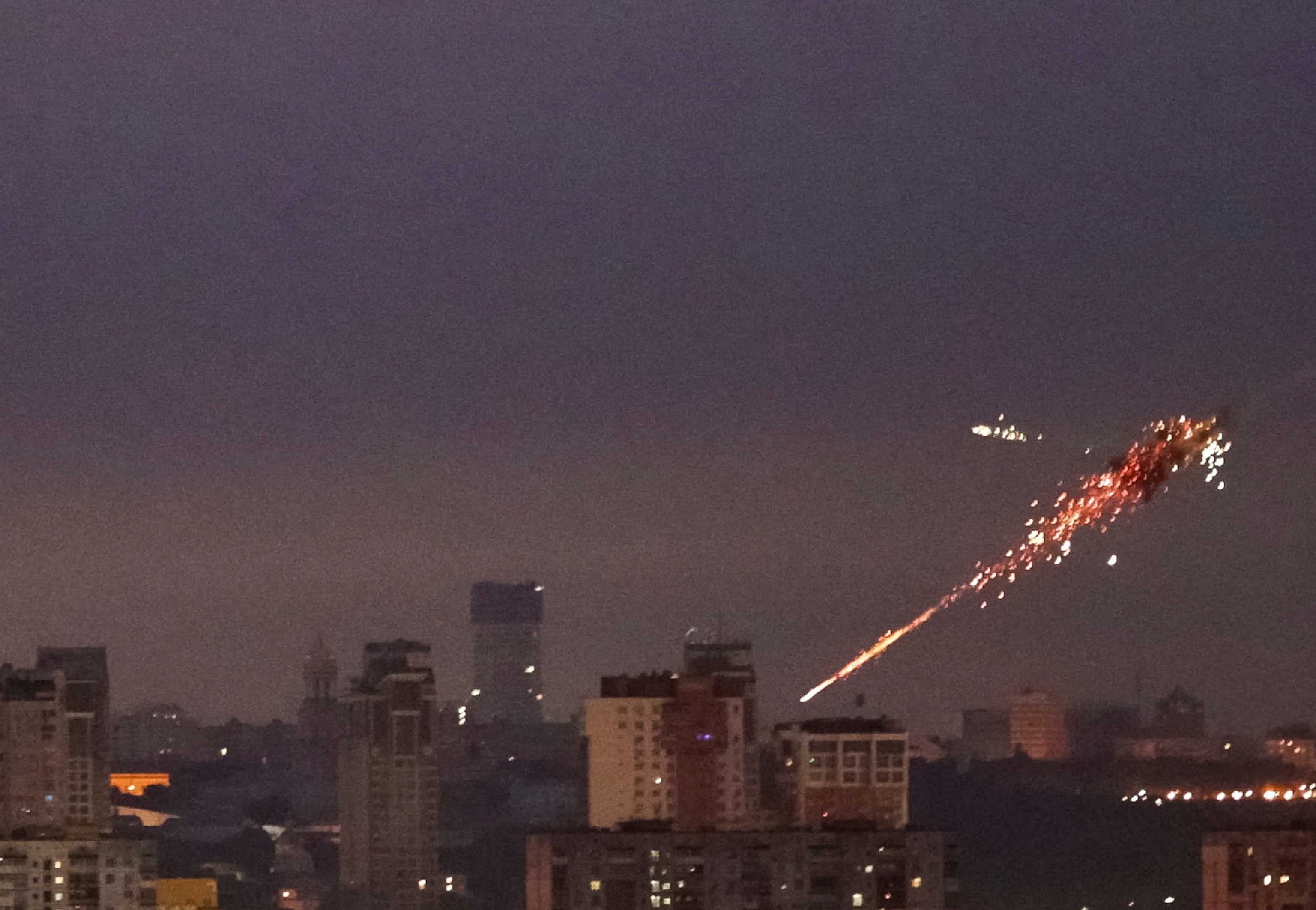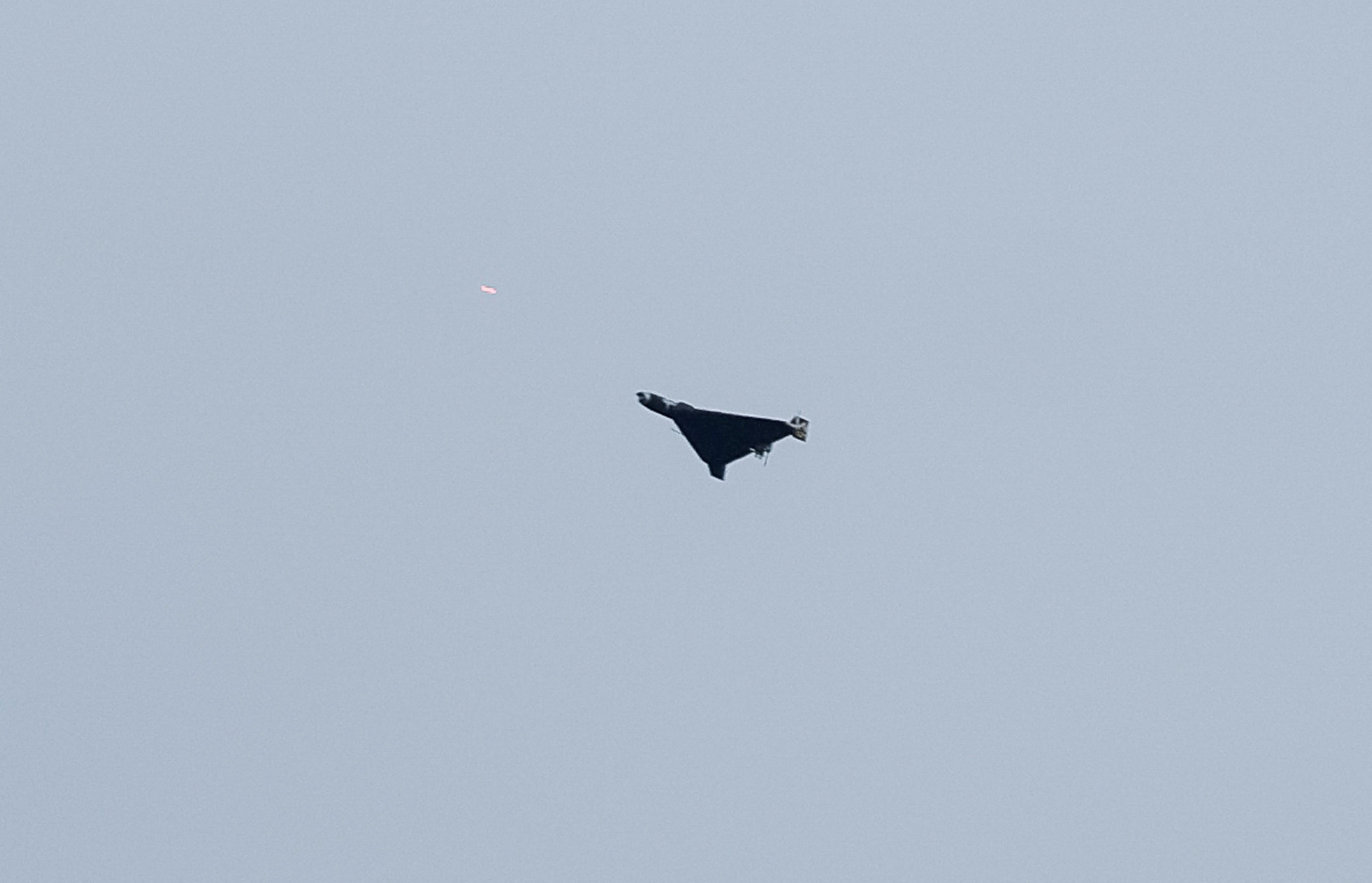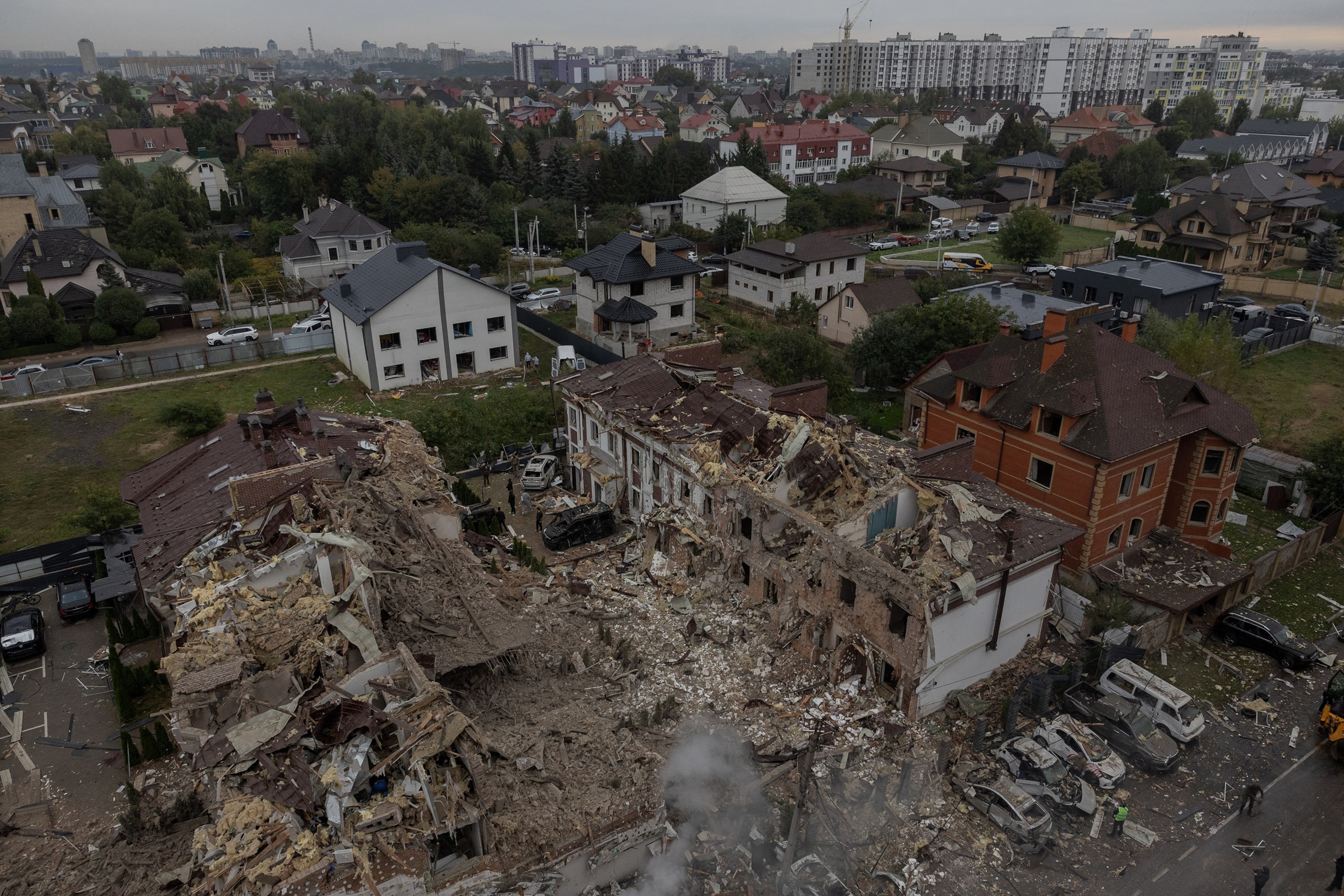

LONDON -- Ukraine reported a 38% spike in combined Russian drone and missile attacks through September when compared with August, air force data analyzed by ABC News showed, as Moscow intensified its nightly long-range barrages across the country.
Ukraine's air force said Russia launched a total of 5,636 drones and 187 missiles into the country through September. That meant a roughly 39% increase in the number of drones and a nearly 20% increase in the number of missiles versus August.
The air force reported a daily average of nearly 188 Russian drones and just over six Russian missiles in September. Defenders downed or suppressed almost 87% of all Russian drones and over 68% of Russian missiles through the month -- rates roughly comparable with previous months.
To date, July 2025 was the busiest month for Ukrainian defenders, who faced 6,443 drones and missiles across the course of the month, per air force data.
August represented somewhat of a lull in Russian strikes. It was the first month since April that saw a lesser number of strikes than the preceding month.

The long-range strikes are contributing to mounting civilian casualties across Ukraine in the fourth year of Russia's full-scale invasion, according to the U.N. Human Rights Monitoring Mission in Ukraine. The mission said in a statement last month that early September saw an intensification of such attacks.
On the night of Sept. 6-7, for example, Russia launched the largest air attack of the war to date, when 810 drones and 13 missiles were fired into Ukraine. At least five civilians were killed and 41 injured across six Ukrainian regions plus the capital Kyiv.
Other major strikes came on the night of Sept. 19-20. when Russia launched a total of 619 munitions, and on the night of Sept. 27-28. when Russia launched 643 munitions.
Neither Russia nor Ukraine publish data detailing the scale of their own strike campaigns. Ukraine's air force publishes a daily tally of Russian drone and missile strikes, while Russia's Defense Ministry only publishes figures of Ukrainian drones shot down.
The figures do not include the far more common use of "first person view" drones -- commercial-style quadcopters repurposed into explosive one-way attack drones -- that now dominate the front lines.

Both Russian and Ukrainian forces also use these shorter-range weapons to attack in populated areas just behind the front lines. Longer-range drones are also routinely used to strike towns and cities close to the front.
The U.N. mission to Ukraine said last month that 72% of all civilian casualties recorded in August occurred near the frontline -- primarily in the eastern Donetsk and southern Kherson regions.
The longer-range craft include the multiple Russian-engineered variants of the Iranian-designed Shahed drone. Russia refers to that family of drones as the Gerans, newer versions of which are jet powered.
Also included are smaller Gerbera drones which are mostly used as decoys to distract air defenses, but which can also carry explosives.
Russia frames its long-range attacks as targeting military and industrial targets. But Russian munitions routinely hit civilian buildings and inflict civilian casualties.
Last month, Russian drones also twice crossed into NATO airspace, prompting allied aircraft to shoot down several over Polish territory.

Though Russian craft have repeatedly violated NATO airspace during its full-scale invasion of Ukraine, the shootdowns over Poland represented the first time NATO had shot down Russian drones. At least one drone also crossed into Romania in September, but was not shot down.
Ukrainian President Volodymyr Zelenskyy on Sept. 28 called Moscow's continued strikes "vile and cowardly," citing them as evidence that the Kremlin has no genuine interest in peace talks.
"This is precisely how Russia shows its true position, Zelenskyy wrote. "Moscow wants to keep fighting and killing and deserves only the harshest pressure in the world." Such punishment, Zelenskyy has said, will come at least in part in the form of more Ukrainian long-range strikes into Russia.
Ukraine continued that long-range campaign in September, with Kyiv reporting a sustained focus on Russian energy infrastructure.
Russia's Defense Ministry reported downing a total of 2,788 long-range Ukrainian drones during September, at an average of just under 93 per day. This marked a slight increase on figures from August, during which time Moscow claimed to have downed 2,786 Ukrainian drones at an average rate of nearly 90 per day.
Defense Ministry figures suggest that May 2025 saw a highwater mark for Ukrainian drone attacks, with Moscow claiming to have shot down 3,611 craft at an average rate of 116 per day.
